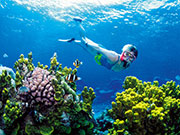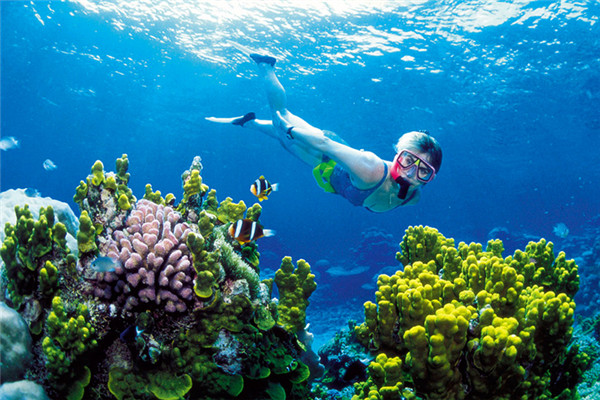'Citizen scientists' help preserve ocean wildlife

 0 Comment(s)
0 Comment(s) Print
Print E-mail CNTV, November 1, 2016
E-mail CNTV, November 1, 2016
Thousands of private volunteers are helping Australian scientists measure the impact of coral bleaching on the Great Barrier Reef. The "citizen scientists" are counting fish and capturing images of coral, to send back to those in charge of protecting the reef.
 |
|
Thousands of private volunteers are helping Australian scientists measure the impact of coral bleaching on the Great Barrier Reef. |
There's work to be done at Lady Elliot Island, the southern-most point of the Great Barrier Reef.
This new batch of 'citizen scientists' are learning how they can help protect the Great Barrier Reef.
Some of the people on the trip are executives from some of the world's top companies including Google, Qantas and BHP Billiton.
They are working with the Great Barrier Reef foundation to measure reef health.
More than 1200 marine species live around Lady Elliot Island. But the foundation wants to know if specific species like clams and butterfly fish still live here. If the citizen-scientists can find them swimming under the surface, it's a sign the reef is healthy.
The tiny island's marine landscape didn't disappoint.
A dolphin enjoyed an early morning swim with budding scientists.
And turtles and fish were in abundance.
"I saw lots of trout, lots of little Nemo fish, they were all together in little families so we saw lots of them."
"I was counting sea slugs. How did that go? Pretty good. Found about 350."
The results confirm the southern reaches of the reef have escaped the bleaching that's hit further north.
Those who live and work with the reef every day say citizen science is invaluable.
"This park is longer than Japan, it's longer than Italy, 344 thousand square kilometres. So it's very hard for any government department to manage. So to get citizen science involved is a fantastic way to help," said Peter Gash, Lady Elliot Island eco resort.
The work doesn't stop on the boat.
The images and figures are uploaded onto a shared network, so reef scientists and managers can evaluate the data.
"The people are not just coming out here and having fun and pretending to be scientists. They're not wearing white lab coats, they're actually collecting important data," said Anna Marsden, Great Barrier Reef Foundation.
Australia's citizen scientists are making their mark at a crucial time for the reef.






Go to Forum >>0 Comment(s)